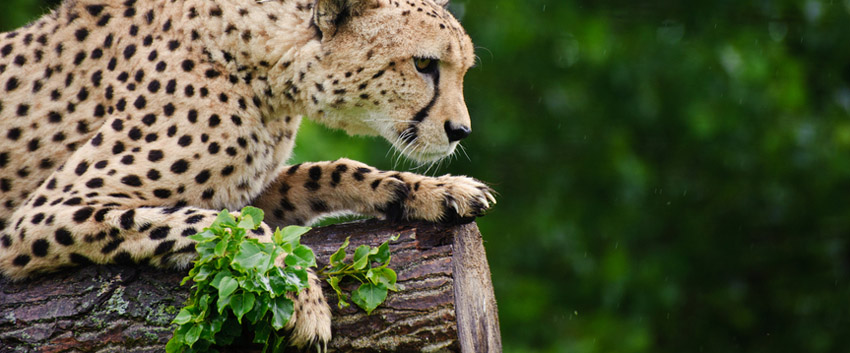

 Claws and Paws
Claws and Paws
The paws are less rounded and harder than other cats' and help the cheetah make quick turns. Cheetah claws are actually semi-retractable and aid in acceleration. Naturally, over time they become blunted from wear. The "thumb" claw or dew claw (at right bottom) is positioned back of the other 4 and higher. This claw is used to hook prey during the chase. Cheetahs are actually named for the dew claw. Their scientific name - Acinonyx - was coined in 1828 by Joshua Brooks from the Greek words "akaina" which translates as "thorn" or "goad" and "orux" which means "claw".
Researchers now monitor cheetah populations in the wild by using the footprint identification technique call FIT. This is an international collaboration involving conservation organizations like Wildtrack and AfriCat. The technique assumes that every paw print is unique to a particular cheetah and can be identified similar to a human fingerprint. Local people in Namibia have identified animals from their tracks for many years. As each human fingerprint has a unique pattern of ridges and whorls, each cheetah produces a paw print of unique size, shape and character. Prints are photographed and stored in a computer database.
Anatomy | Head | Teeth | Tail Patterns | Claws/Paws | Menu